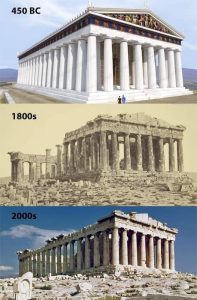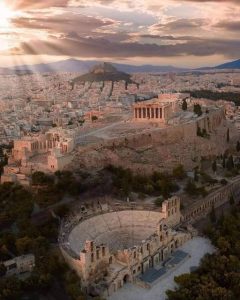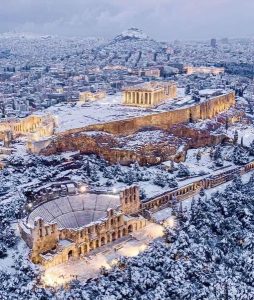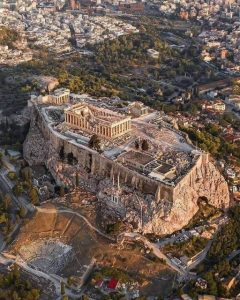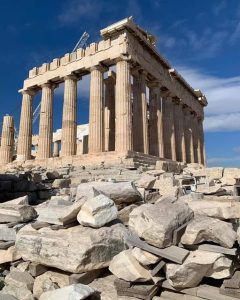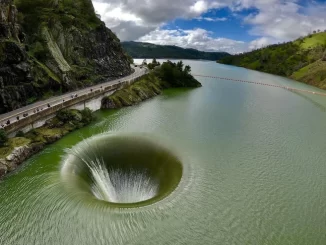Athens’ Acropolis, a symbol of classical spirit and architectural grandeur, is typically envisioned under the Mediterranean sun, casting sharp shadows across its ancient marble structures. However, the rare and mesmerizing image of the Acropolis blanketed in snow presents a unique spectacle, combining the iconic warmth of ancient Greek architecture with the serene and transient beauty of winter.
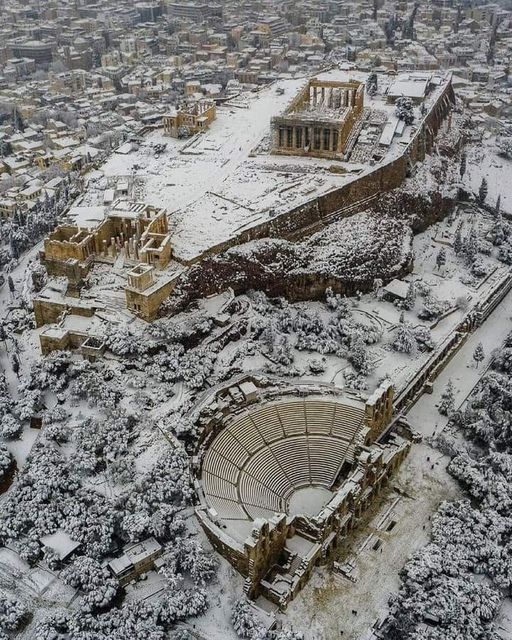
This stunning photograph captures a snow-covered Acropolis, a sight seldom seen but profoundly striking. The contrast between the usual golden hues of the Parthenon and other structures against the crisp white snow offers a new perspective on this timeless landmark. Such a rare weather event highlights the enduring resilience of these structures, standing steadfast against the changing elements over millennia.
The Acropolis of Athens, perched on a rocky outcrop above the city, has been a spiritual center since prehistoric times. It reached its architectural zenith in the 5th century BC under the leadership of Pericles, who commissioned the construction of its most famous building, the Parthenon, dedicated to Athena, the city’s patron goddess. Alongside the Parthenon, the Acropolis hosts other significant structures such as the Erechtheion, the Propylaia, and the Temple of Athena Nike, each contributing to the grandeur of the complex.
The snowy scene invites contemplation of the Acropolis’ role through history—not just as a political and religious center in ancient times but as a beacon of cultural endurance and artistic excellence through the ages. The snow adds a layer of quiet and calm to the site, momentarily pausing the bustling activity usually surrounding this popular tourist destination. It allows for a momentary reimagining of ancient ceremonies and the daily routines of those who wandered these grounds thousands of years ago, perhaps even under similar unexpected snowfalls.
Moreover, the photograph underlines the importance of preservation efforts that have sustained the Acropolis through centuries of natural adversities. These efforts ensure that the site remains intact not only as a historical archive but as a source of inspiration and education for people around the world. The fleeting snow also serves as a reminder of the natural processes that shape our environment and the ongoing dialogue between nature and human heritage.
In conclusion, the Acropolis of Athens, dusted in snow, stands not only as a testament to ancient Greek architectural prowess but also as a symbol of the timeless dialogue between nature and culture. This rare view of the Acropolis in winter captures the essence of its enduring beauty and continues to inspire awe and respect for one of the world’s greatest cultural treasures, reminding us of the ever-present connections between past and present, even in the most fleeting moments.
